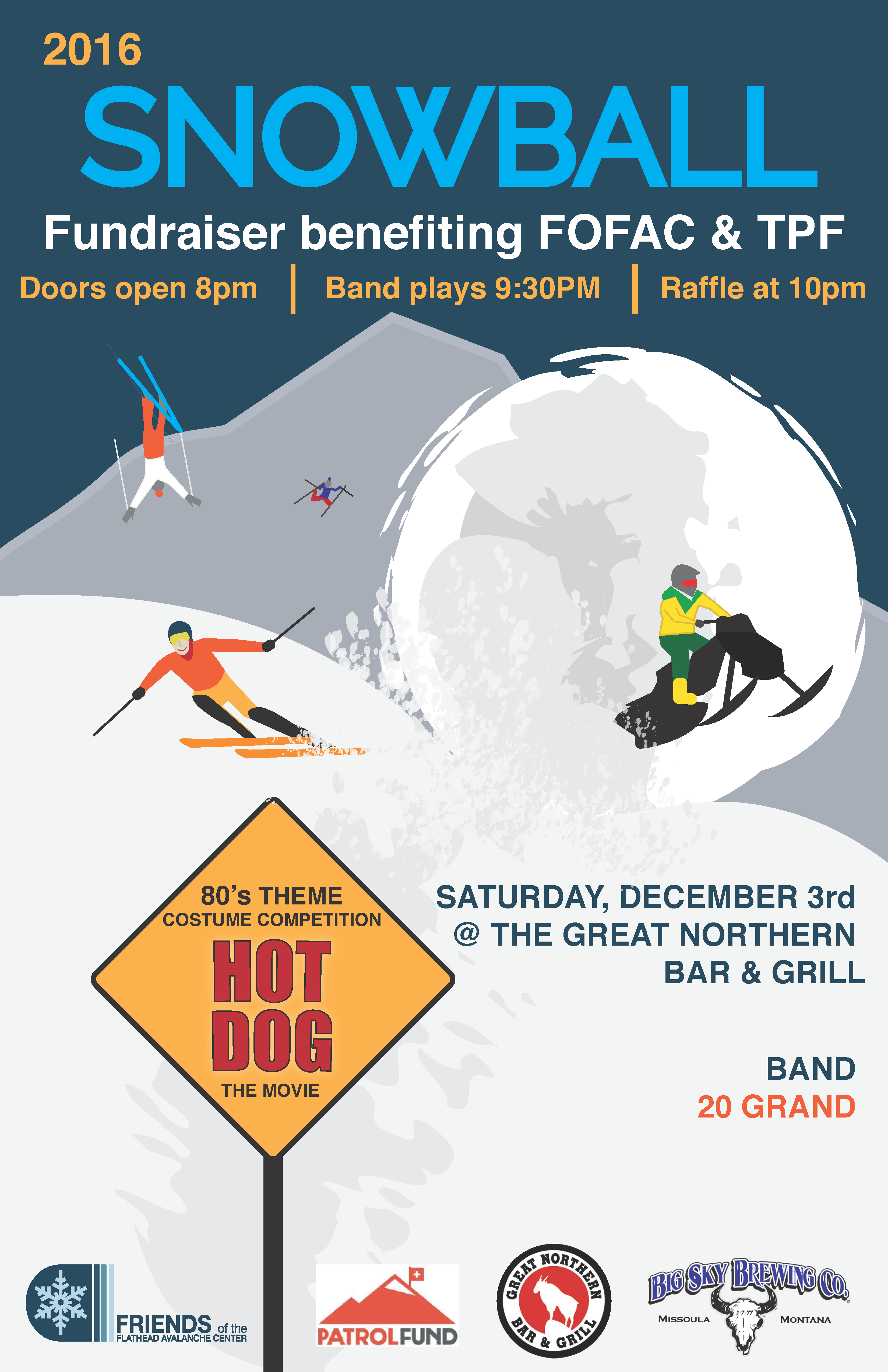| Saturday | Saturday Night | Sunday | |
|---|---|---|---|
| Cloud Cover: | Windy with light snow. | Substantial storm enters our region. | Heavy snow with windy conditions. |
| Temperatures: | 26-34 deg. F. | 20-28 deg. F. | 24-34 deg. F. |
| Wind Direction: | West-Southwest | Southwest | West |
| Wind Speed: | 14-16 mph with gusts to 36 mph. | 15-19 mph with gusts to 32-36 mph. | 12-15 mph with gusts to 25 mph. |
| Snowfall: | 0-2 in. | 3-6 in. | 4-10 in. |
| Snow Line: |
Whitefish Range
Swan Range
Flathead Range and Glacier National Park
How to read the forecast
Continued light snow and wind has created dangerous avalanche conditions in some upper elevation locations. This snow accumuluated on a variety of surfaces including sun crusts, surface hoar, and facets. Windy conditions today will increase the thickness and reactivity of freshly formed wind slabs. Carefully evaluate any slope you plan to recreate on. We will provide general avalanche information, and begin issuing daily advisories with hazard ratings once we have enough information.

No Rating
?
Above 6500 ft.
No Rating
?
5000-6500 ft.
No Rating
?
3500-5000 ft.
24 hour new snow totals as of 0600 range from 1-5 inches across our area. The new snow that we received over the past 72 hours has fallen on a variety of surfaces including surface hoar, facets and sun crusts and dangerous avalanche conditions exist in some locations. These weak layers could remain problematic for quite some time. We currently don't have a great handle on the distribution and reactivity of these layers across our advisory area as access to upper elevations has been sparse (except for a few locations in the Swan Range and southern Whitefish Range). Regardless, avalanches have occurred and it is still possible and potentially likely to trigger an avalanche today.
Near ridgelines, winds are drifting this snow onto leeward aspects and forming fresh wind slabs. As we noticed in John F. Stevens Canyon yesterday, even areas of very thin snow pack can have thick pockets of wind drifted snow. Windy conditions today will continue to redistribute this new snow and add thickness to these fresh wind slabs. Evaluate all wind loaded terrain today before committing to a slope. Look for smooth rounded pillows on leeward sides of ridges and cross loaded terrain features. Obvious signs of instability will be cracking, whumphing and hollow sounds. In areas favored by this storm dry loose avalanches on steep terrain will be possible especially on sunny aspects.
Remember, avalanches can happen any time of the year. The effect of small avalanches can be amplified by thin snow cover, exposed hazards, and narrow gullies. If there is enough snow to ski or ride, it's deep enough to slide.
____________________________________________________________________________________________________________
Join the Friends of the Flathead Avalanche Center (FOFAC) and The Patrol Fund for a fundraiser for avalanche education. It's an 80s-themed party with a costume contest, raffle prizes (including skis), and a ton of fun.
Doors open at 8:00 pm.

Next Thursday, December 8 join us at the Sportsman and Ski Haus in Whitefish for a free 1 hour avalanche awareness presentation.
Yesterday (Friday), Mark accompanied BNSF Avalanche Safety in John F. Stevens Canyon in southern Glacier Park. They were able to intentionally trigger 2 small soft slab avalanches on a mid-elevation wind loaded southeast aspect. Moderate winds were noted at mid and upper elevations throughout their tour. Upper elevation cornice formation was impressively large for this early in the season.
Thursday, skiers in the Jewel Basin in the Swan Range reported about 10-14 inches of new snow that was poorly bonded to the old snow surface. They observed and intentionally triggered a few small avalanches on wind drifted aspects up to 12-16 inches deep, and also noticed cracking of the snowpack. On non-wind loaded terrain, they experienced dry sluffing of the new snow.
On Wednesday skiers on Mt. Aeneas in the Swan Range reported moderate winds that were forming 5-10" thick wind slabs on ridgelines. Just below the ridgelines cracking was observed but the slabs were less cohesive. On Tuesday one of these skiers noted a thin layer of facets just above a ice mass 20 cm from the ground. Partial propagation occurred in his ECT on this weak layer.
Mark visited the backcountry outside of the WMR resort on Tuesday. All aspects above 5500' had both a thin layer of surface hoar on the snow surface and a ice mass forming the basal snowpack. Sunny aspects had a thin sun crust just below the surface which failed easily in stability tests. No wind slabs were encountered on this relatively sheltered tour.
Today will be a transition day before a potent winter storms rolls into our area tonight. As of 6:00 a.m. temperatures at upper elevation weather stations range from the upper teens to mid 20s F with light to moderate winds. Very light snow will fall this morning but wind speed will increase throughout the day. Upper elevation temperatures should top out in the upper 20s F today. Expect heavy snowfall and windy conditions starting tonight and lasting into Monday morning
| 0600 temperature: | 19-26 deg. F. |
| Max. temperature in the last 24 hours: | 19-26 deg. F. |
| Average wind direction during the last 24 hours: | SSW |
| Average wind speed during the last 24 hours: | 5-15 mph |
| Maximum wind gust in the last 24 hours: | 16-28 mph |
| New snowfall in the last 24 hours: | 1-5 inches |
| Total snow depth: | 33-48 inches |
This advisory applies only to backcountry areas outside established ski area boundaries. This advisory describes general avalanche conditions and local variations always occur. This advisory expires at midnight on the posted day unless otherwise noted. The information in this advisory is provided by the USDA Forest Service who is solely responsible for its content.









